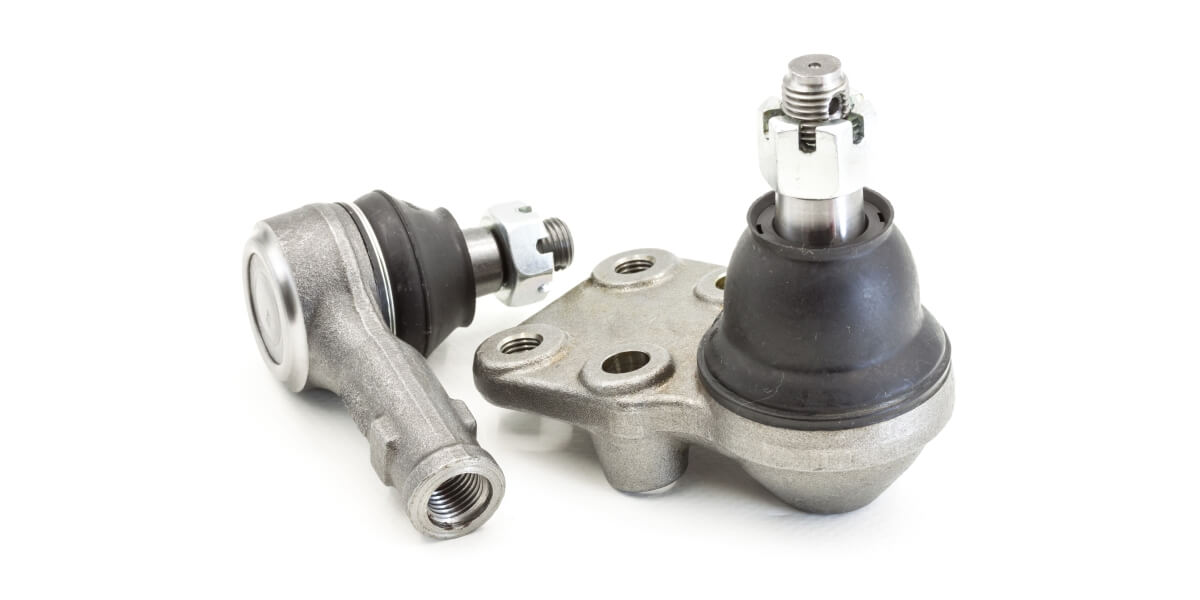
When you have a worn-out ball joint on your car or truck, you might start hearing a clunking or squeaking sound coming from the front end. Worn ball joints can cause vibration in the steering wheel. Your car or truck may even wander left and right without the steering wheel moving. A worn ball joint can also fail completely, putting drivers in a very dangerous situation where they cannot control the wheels anymore. Luckily, replacing a ball joint is not very difficult and most DIY mechanics should be able to replace one with only basic tools. The cost of replacing a ball joint, however, can range from cheap to quite expensive, depending on the kind of car you drive.
Identifying Worn Ball Joints
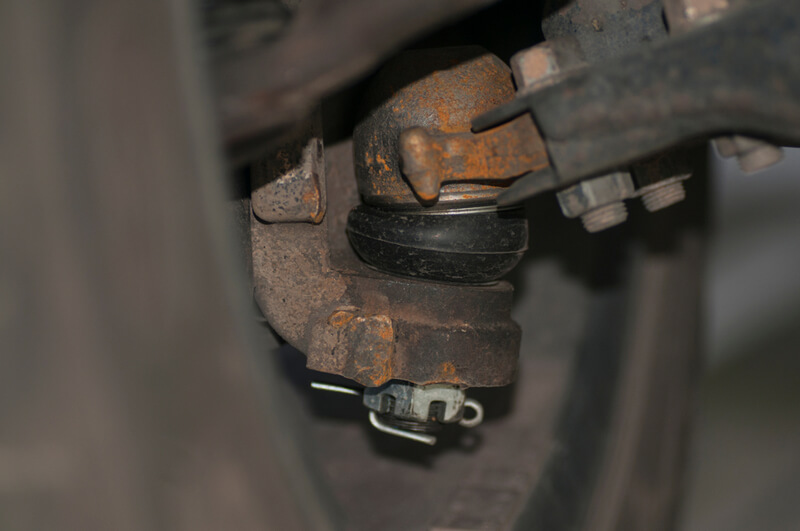 Many vehicles will have several ball joints. The most commonly serviced are the upper and lower ball joints that allow the wheel to move over bumps.
Many vehicles will have several ball joints. The most commonly serviced are the upper and lower ball joints that allow the wheel to move over bumps.Before you start the inspection process, make sure to check in your car's repair manual and identify how many ball joints your car has. Look for their position and how to replace them. Some cars have ball joints that are bolted onto the control arms, while others are pressed in place and will require a hydraulic press to be replaced. If your car is equipped with the latter and you don't have a press at home, you're better bringing the car to your auto repair shop already. Many new cars today also don't have serviceable ball joints, requiring owners to change major suspension components to replace worn ball joints. Gathering as much information as you can on your suspension system before hitting the road to try to locate where the problem is coming from will significantly reduce the time required for the inspection.
Road Testing
If you suspect that you may have worn ball joints, a simple road test can help you to identify the problem. Drive the car safely and within the speed limit while listening for noises and paying attention to vibrations, steering wandering, and other abnormal driving and steering noises and feelings.
Drive slowly over speed bumps and watch out for clunks and squeaks from the front end. Clunking is caused by too much clearance within the ball and its housing. Squeaking is usually the result of a ball joint that has a failed dust boot, allowing water and dust to enter. After a while, water will wash out the grease and dust will prevent the ball joint from turning freely, creating a particularly annoying squeak when turning the steering wheel and hitting potholes.
During the road test, try to locate from which side the noise is coming from so you have a better idea of where to look when you raise the car to perform the visual inspection.
Visual Inspection
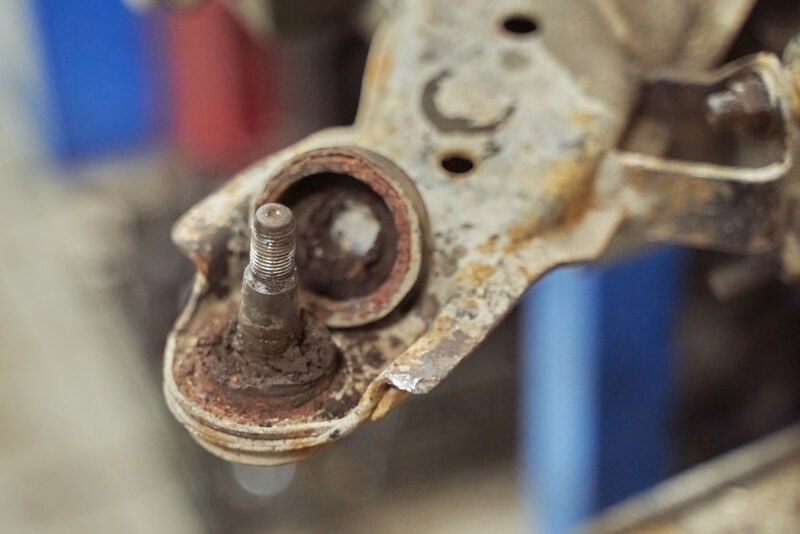 A ball joint that has gone bad often makes clunking noises. This worn ball joint shows why. Significant areas of wear allow movement that results in metal-on-metal contact.
A ball joint that has gone bad often makes clunking noises. This worn ball joint shows why. Significant areas of wear allow movement that results in metal-on-metal contact.Lift the car using a jack until the front wheels are free to move. Never forget to place jack stands under the car so it doesn't drop to the floor while you are under it. Make sure to place a wheel chock at the rear wheels to prevent the car or truck from rolling while it is on the jack stands.
When you have the vehicle on the stands, start by grasping the wheel and trying to move it up and down. Good ball joints should show no movement whatsoever. Any excessive movement could be a problem with your ball joints, but could also indicate a bad wheel bearing. If you detect a loose while shaking the wheel up and down, ask someone for help and lay under the vehicle so you can see the ball joint with the wheel still on. Ask your helper to shake the wheel up and down once again. You should then be able to see the loose ball joint move back and forth. If any of the ball joints seem loose, look around the wheel bearing. If the driveshaft seems to move when shaking the wheel up and down, the problem may very well come from the bearing instead. Loose bearings are the most common cause of misdiagnosed ball joint problems so look out for that!
Remove the wheel and inspect the ball joint. Typical cars will have a lower ball joint and an upper ball. If you notice torn dust boots, dry joints, or significant rust and corrosion, it is probably time to replace the ball joint.
The Cost of Ball Joints
The cost of the ball joint itself will vary greatly depending on what type of vehicle you own. Many older vehicles have removable ball joints. These will be substantially cheaper to repair than modern vehicles with non-serviceable ball joints. A cheap ball joint will set you back around $35. Vehicles that require replacing complete control arms can cost more than $1,000 just for the parts.
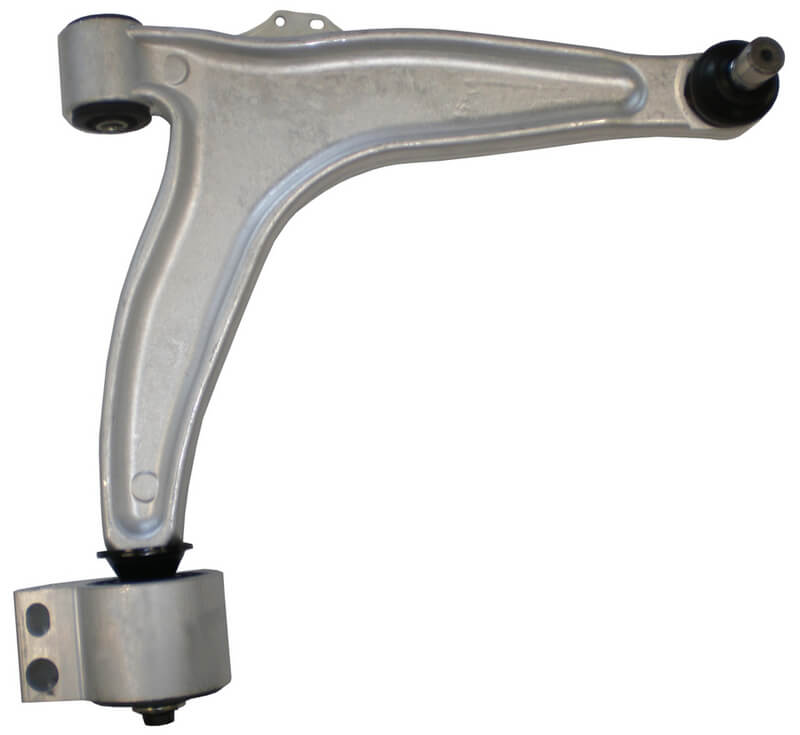 This is an example of a control arm with a non-serviceable ball joint. Cars equipped with suspensions like these will require replacement of the complete control arm to service the ball joint.
This is an example of a control arm with a non-serviceable ball joint. Cars equipped with suspensions like these will require replacement of the complete control arm to service the ball joint.The Cost of Replacing Ball Joints
The American Automobile Association (AAA) says that shops within their network typically charge between $47 and $215 per hour for the labor to replace the joint. Studies found that the average cost of replacing one ball joint is around $474. The cost of replacing a ball join will differ greatly depending on the labor rate of the auto repair shop you are going to. As a general rule, let's say that car dealers often charge two or three times the same rate.
The same thing is true depending on whether you decide to buy OEM or aftermarket parts. The same $35 aftermarket ball joint can easily cost over $100 for an OEM one. This being said, OEM parts often come with a longer guarantee so deciding which one you should get is really up to you and depends on if your car is on a loan, how long you plan on keeping the car, etc.
DIY Costs and Considerations
Tackling a ball joint replacement may seem like a really difficult job to do at home. With a little help and a good service manual, most people should have no trouble replacing a ball joint, be it a bolt-on model. For this type of ball joint, only a few specialty tools are required. DIY auto mechanics should already have all the tools in their tool chest while others can either rent or purchase the tools for less than one hour of shop labor rate charges. For pressed ball joint, unless you already have a hydraulic press at home, you're better leaving this to professionals.
Ball Joint Separators
The most essential tool for removing a ball joint is a ball joint separator. The most common ball joint remover looks like a wedged fork with a sturdy metal handle. This type is intended to be placed into the joint, then hit with a hammer until the joint separates. Unfortunately, this type of separator often damage the dust boots and, therefore, are only suited when replacing the ball joint. Do not use one to separate the ball joint if you plan on reusing it. Auto repair shops often use hydraulic or air-powered separators that make the job much quicker.
My favorite ball joint removing tool has a wedge-shaped fork and a lever that sits on the ball joint stud. When you use this tool to remove a ball joint, you thread a rod in against the two pieces. When you tighten the rod down, the ball joint will pop loose.
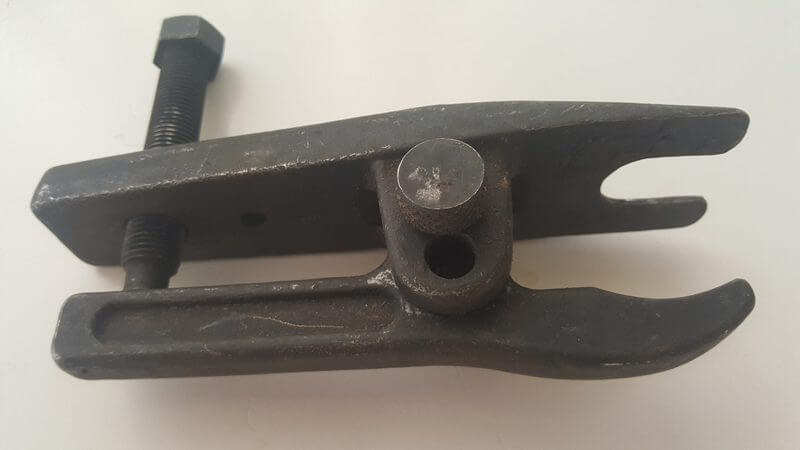 This is my personal favorite ball joint separator. It costs around $50 and will last many years.
This is my personal favorite ball joint separator. It costs around $50 and will last many years.You should anticipate paying between $10 and $50 for a good-quality ball joint remover. Most auto part stores that rent tools should have a ball joint separator available for a reasonable fee.
A heavy-duty pry bar and socket set will make the job much easier for you. In some cases, you may have to buy a special socket for removing the ball joint retaining nuts.
Additional Tasks When Replacing Ball Joints
It is smart to inspect all other aspects of your steering system when changing your ball joints. Inspect the inner and outer tie rods for looseness, torn dust boots, and damage. Most modern cars use rack-and-pinion steering instead of a steering box. It's a good idea to make sure the rack is in good shape while you're there. Other suspension components like shocks, struts, and bushings should also be inspected. If you find a torn control arm bushing, you might as well replace the control arm right away.
Ball joints manufacturers use heavy grease to keep the ball joint from wearing too quickly. The grease is either pressed in with a grease gun or is factory-sealed. Most aftermarket ball joints will come with a grease fitting, called Zerk, that you need to install once the new ball joint is in place. Always grease the new ball joint before dropping the car to the floor. Remember to recycle used automotive grease. Landfills are not the appropriate place for this stuff.
Other Costs Associated with Ball Joint Replacement
Once your faulty ball joint has been replaced, you may need to have your car or trucks wheel alignment checked. And here's why you should inspect your whole suspension and steering system while you're at it. If another component like a tie rod end or control arm bushing is loose, it will be impossible for the technician to align your car properly.
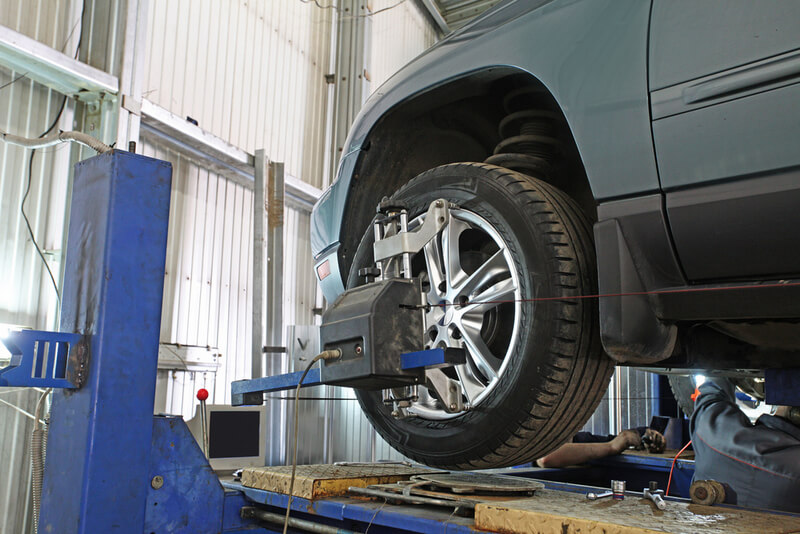 Wheel alignment might be necessary after replacing ball joints. A qualified repair shop can typically check and correct wheel alignment in about an hour. They use specialized equipment to ensure highly accurate alignment.
Wheel alignment might be necessary after replacing ball joints. A qualified repair shop can typically check and correct wheel alignment in about an hour. They use specialized equipment to ensure highly accurate alignment.Aligning your steering at home is possible but definitely not recommended. Wheel alignment requires using laser sensors and a specific computer to set the wheels to your car manufacturer's recommended specs. An alignment usually runs between $50 and $85 for most cars and trucks.
Conclusion
Replacing your ball joints at home is not that difficult once you have the right tools and a good repair manual to rely on. However, if you aren't sure of what you are doing, leaving the job to a certified auto technician may still be your best bet. Always keep in mind that incorrectly replacing a ball joint may not only be dangerous but will also cost more in the end. When in doubt, ask a trustworthy mechanic for advice and watch how he does it. Next time, you'll be able to do it by yourself, be more confident and save tons of money at the same time!
